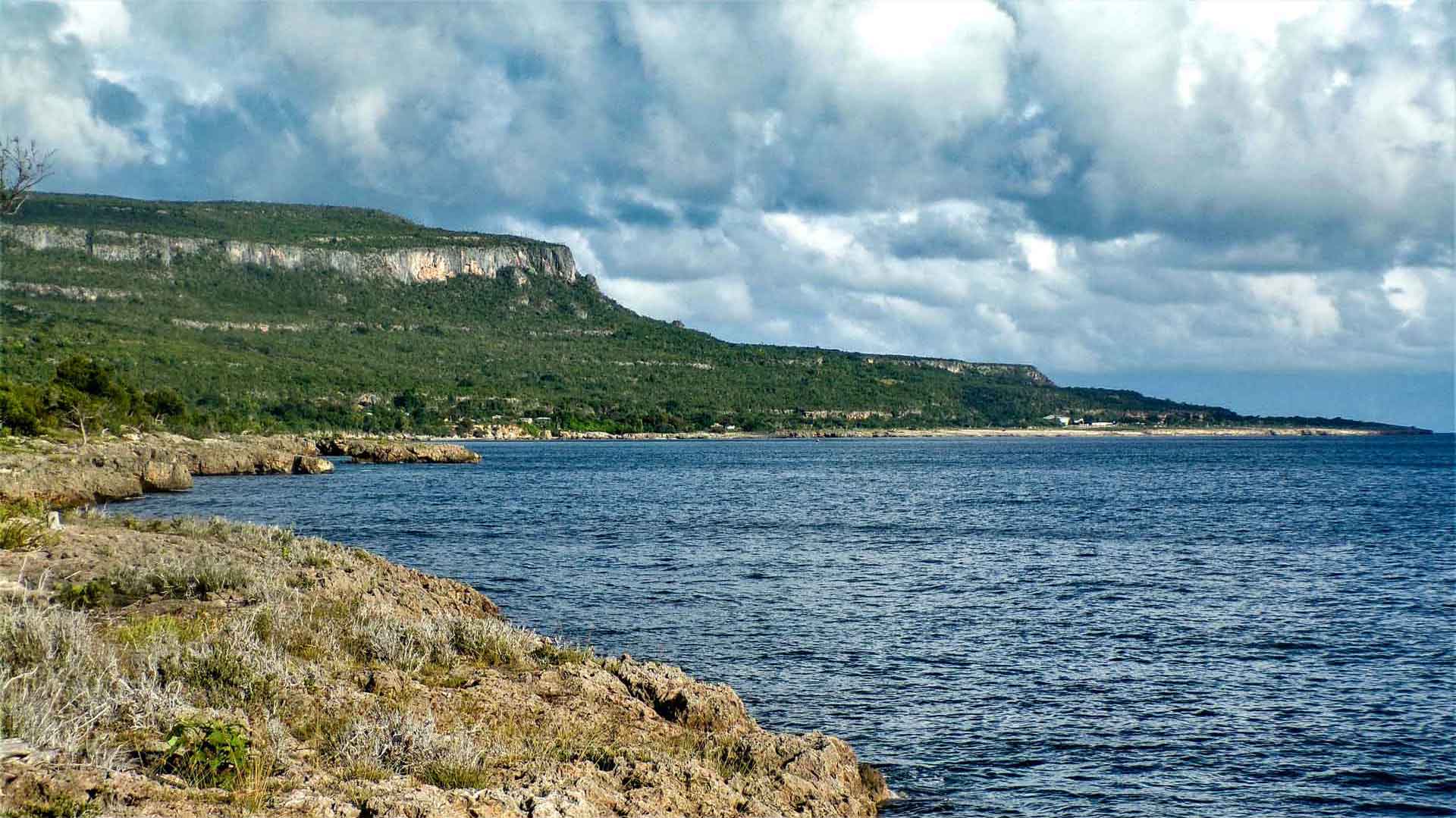
The world is full of natural wonders and geological phenomena that continue to amaze and intrigue us. One such phenomenon is the formation of uplifted marine terraces. These fascinating landforms, found along coastlines around the globe, hold a wealth of information about Earth’s ever-changing landscape. In this article, we will explore 15 mind-blowing facts about uplifted marine terraces, delving into their formation, significance, and the invaluable insights they provide into our planet’s geological history. From their formation as ancient seabeds to their role in deciphering past sea-level changes, these marine terraces offer a unique glimpse into the dynamic forces that have shaped our world. So, sit back, and prepare to be amazed by the awe-inspiring wonders of uplifted marine terraces.
Key Takeaways:
- Uplifted marine terraces are like time capsules that hold secrets about Earth’s history, including ancient beaches, climate changes, and even fossilized remains of marine life.
- These terraces are important for understanding sea-level changes, coastal management, and even serve as tourist attractions. Preserving them is crucial for future generations to learn from their geological wonders.
Evidence of Earth’s Movement
Uplifted marine terraces provide clear evidence of the vertical movement of the Earth’s crust. These terraces often occur at various elevation levels, showing the successive stages of uplift over time.
Striking Geological Features
These terraces are characterized by their distinct flat or gently sloping surfaces, which can stretch for miles along a coastline. Their formation is closely tied to the interaction between tectonic forces and sea-level changes.
Layers of Ancient Beaches
Uplifted marine terraces consist of layers of sediment that were once part of ancient beaches. These sedimentary layers can reveal valuable information about past sea levels and climate conditions.
Indicator of Tectonic Activity
The presence of uplifted marine terraces in an area is a clear indication of ongoing tectonic activity. The upward movement of the land is often a result of forces exerted by faults or the collision of tectonic plates.
Formation Through Subduction
Subduction zones, where one tectonic plate is forced beneath another, are often responsible for the formation of uplifted marine terraces. The immense pressure and compression lead to the uplift of coastal areas.
Climate Archive
The sedimentary layers found in uplifted marine terraces act as a climate archive, preserving a record of past environmental conditions. Scientists can study these deposits to understand how climate has changed over thousands of years.
Fossilized Remains
Uplifted marine terraces can contain a wealth of fossilized remains, including shells, corals, and other marine organisms. These fossils provide valuable insights into the biodiversity and ecological history of the area.
Geological Time Capsules
Each uplifted marine terrace represents a snapshot of a specific moment in Earth’s history. By studying the different layers and the fossils within them, scientists can unravel the complex story of our planet’s past.
Coastal Erosion Reveals Terraces
In some cases, uplifted marine terraces may not be immediately visible. Coastal erosion gradually exposes these hidden geological formations, allowing scientists to study and analyze them.
Global Distribution
Uplifted marine terraces can be found all around the world, from the rugged coastlines of California to the scenic shores of New Zealand. Each location offers unique insights into the geological processes specific to that area.
Human Settlements on Terraces
Throughout history, humans have been drawn to the stable and elevated surfaces of uplifted marine terraces. Many ancient civilizations, such as the indigenous peoples of Peru, built their settlements on these terraces.
Record of Sea-Level Change
By studying the elevation and distribution of different terraces, scientists can reconstruct the history of sea-level changes. This information is crucial for understanding the potential impacts of future climate change.
Importance for Coastal Management
Uplifted marine terraces play a vital role in coastal management and planning. They provide valuable information for identifying areas at risk of erosion and can help determine suitable locations for infrastructure development.
Geotourism Attractions
Due to their scenic beauty and geological significance, many uplifted marine terraces have become popular tourist destinations. Visitors can explore these unique landscapes and learn about the Earth’s dynamic history.
Conservation and Protection
Preserving uplifted marine terraces is essential for maintaining the integrity of their geological and ecological value. Conservation efforts help ensure that these fascinating formations can be studied and appreciated for generations to come.
These 15 mind-blowing facts about uplifted marine terraces showcase the importance of these geological wonders. Not only do they provide valuable insights into the Earth’s past, but they also serve as reminders of the constant change and movement of our planet.
Conclusion
In conclusion, uplifted marine terraces are a fascinating geological phenomenon that offers valuable insights into the Earth’s history and processes. These unique landforms were once submerged underwater, but through tectonic forces, they have been uplifted above sea level, creating stunning coastal landscapes around the world. From their mesmerizing beauty to their scientific significance, uplifted marine terraces capture the imagination and intrigue of geologists and nature enthusiasts alike.Exploring these terraces provides a glimpse into the changes that have occurred over millions of years, from sea level fluctuations to tectonic activity. The intricate patterns, diverse ecosystems, and rich geological records found on uplifted marine terraces contribute to our understanding of Earth’s ever-changing dynamics.Whether you’re an avid traveler, a curious student, or simply someone who appreciates the wonders of nature, learning about uplifted marine terraces is a true adventure. So, next time you find yourself near a coastal region with these geological wonders, take a moment to marvel at the fascinating stories etched into these uplifted landscapes.
FAQs
Q: What are uplifted marine terraces?
A: Uplifted marine terraces are elevated coastal landforms that were once submerged underwater but have been raised above sea level due to tectonic forces.
Q: How are uplifted marine terraces formed?
A: Uplifted marine terraces are formed through a combination of tectonic uplift and erosion. Over time, tectonic forces cause the land to rise, and erosion processes shape the terraces into distinct levels along the coastline.
Q: What is the significance of uplifted marine terraces?
A: Uplifted marine terraces provide valuable information about past sea level changes, tectonic activity, and geological history. They serve as natural archives that help scientists understand Earth’s processes and the impacts of climate change.
Q: Where can uplifted marine terraces be found?
A: Uplifted marine terraces can be found in various coastal regions worldwide, including California’s Pacific coast, the Mediterranean Basin, New Zealand, and parts of Southeast Asia.
Q: Are uplifted marine terraces accessible for exploration?
A: Yes, many uplifted marine terraces are accessible for exploration. Some areas have designated trails or viewpoints that allow visitors to observe and learn about these geological wonders firsthand.
Q: Can uplifted marine terraces support unique ecosystems?
A: Yes, uplifted marine terraces often support diverse ecosystems due to variations in elevation, soil composition, and microclimates. These habitats can host a wide range of plant and animal species, including endemic and rare ones.
Q: Are uplifted marine terraces at risk of erosion?
A: Yes, uplifted marine terraces can be vulnerable to erosion processes, especially when exposed to strong wave action and coastal storms. Climate change and sea level rise also pose additional threats to their stability and preservation.
Q: Can uplifted marine terraces be used for geological research?
A: Absolutely. Uplifted marine terraces are valuable study sites for geologists and researchers. They offer a wealth of information about past environments, ancient sea levels, tectonic activity, and even the history of human occupation in coastal regions.
Was this page helpful?
Our commitment to delivering trustworthy and engaging content is at the heart of what we do. Each fact on our site is contributed by real users like you, bringing a wealth of diverse insights and information. To ensure the highest standards of accuracy and reliability, our dedicated editors meticulously review each submission. This process guarantees that the facts we share are not only fascinating but also credible. Trust in our commitment to quality and authenticity as you explore and learn with us.


